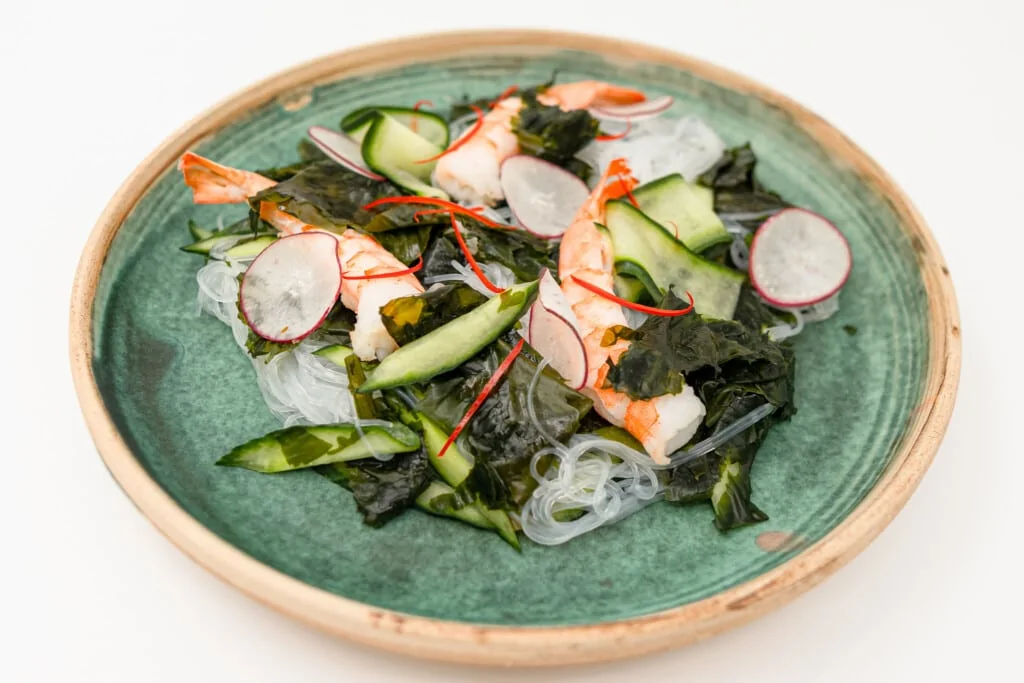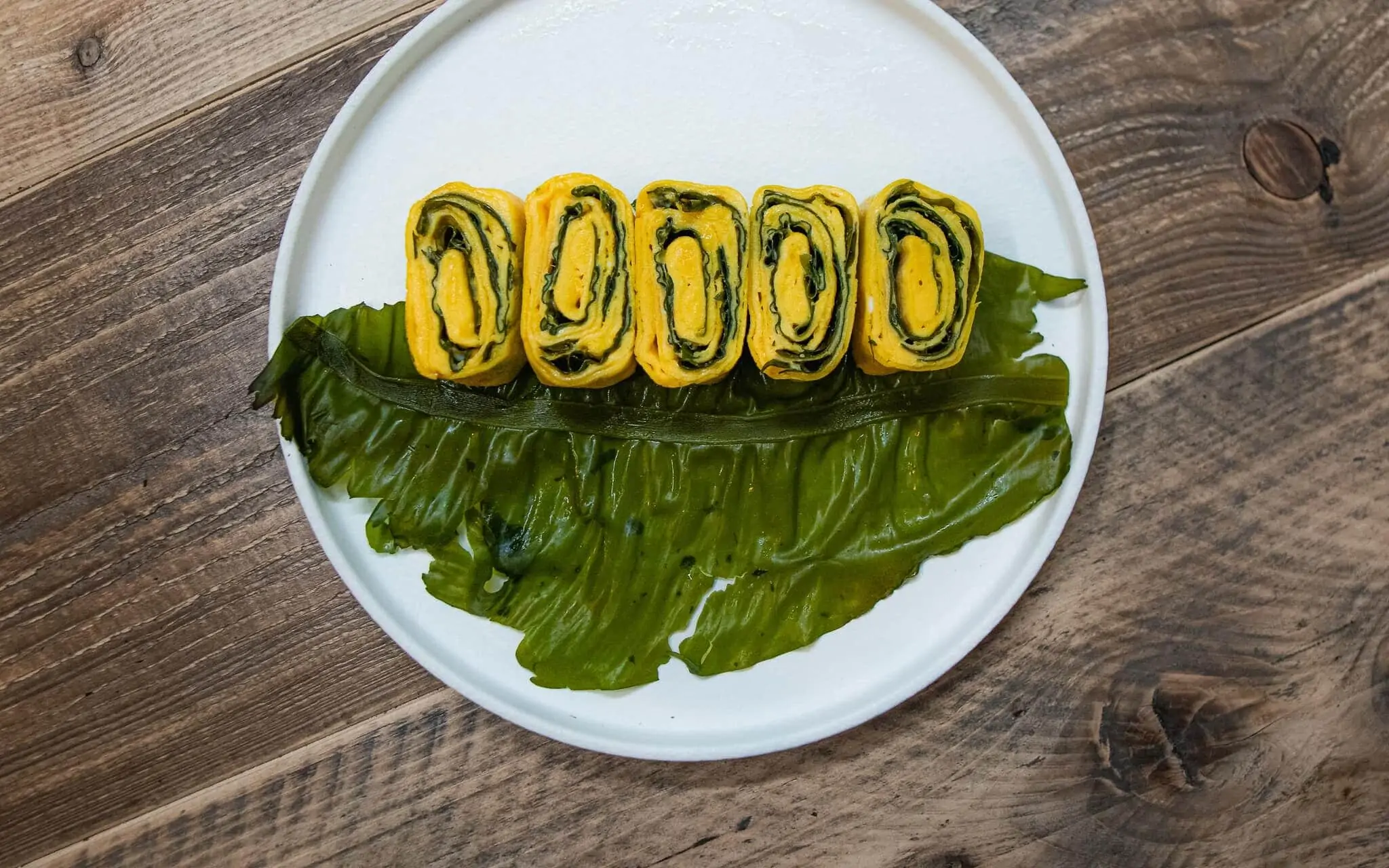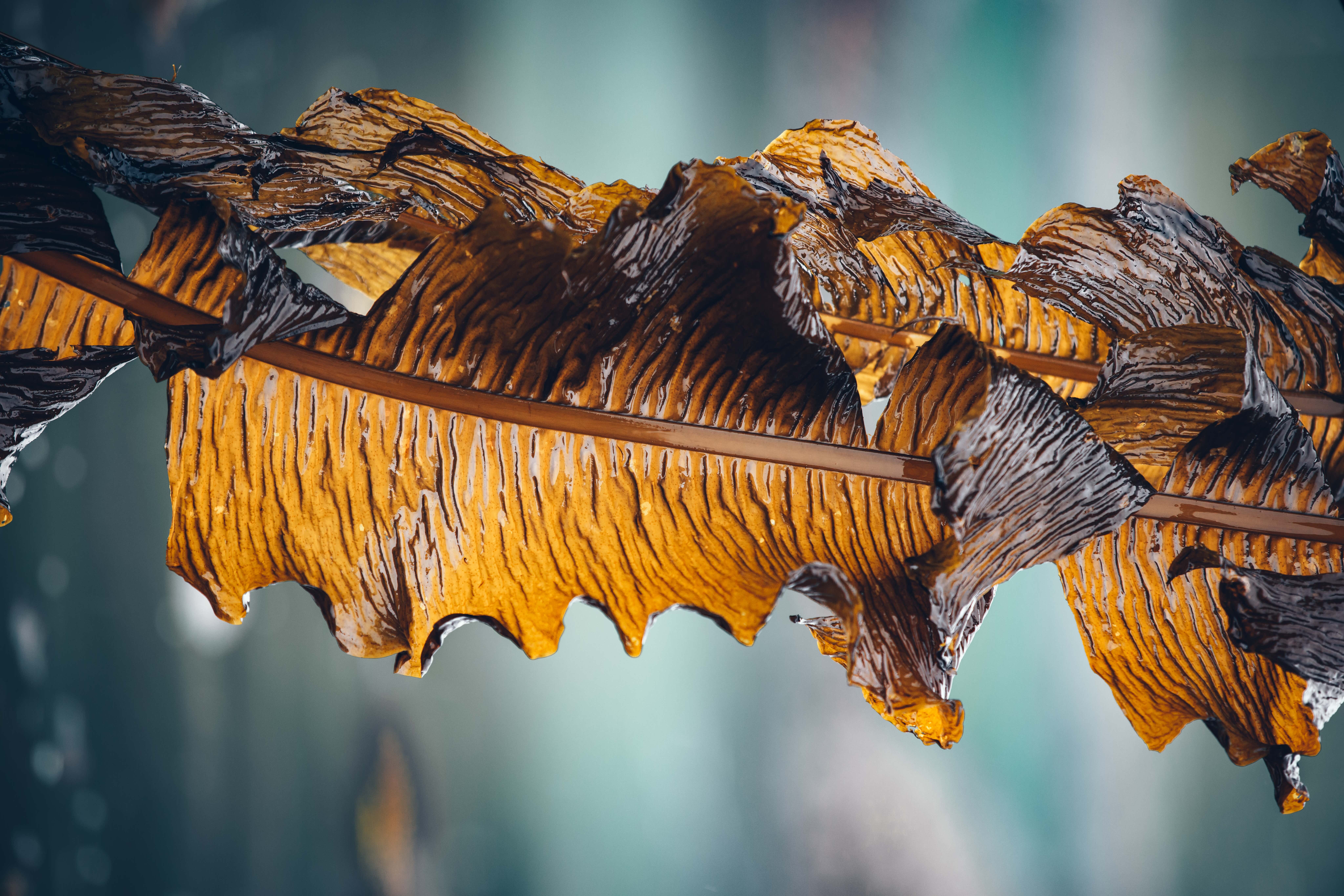
Winged kelp
Alaria esculenta
Other names: Atlantic wakame, Dabberlocks, Butare
Winged kelp has a delicate, feathery leaf which is split down the middle by a distinctive stem, or ‘midrib’. The fronds are dark brown-green in colour and can grow several metres long. Each frond tapers to a point, and often has a collection of smaller, club-shaped fronds at its base. Like a lot of the larger kelp species, winged kelp grows just below the low tide watermark, often in areas where there is severe wave exposure. Winged kelp is related to Undaria pinnatifida – Wakame – which is found growing on the coasts of the northwest Pacific ocean. This is where the nickname Atlantic wakame comes from, as both species have a subtle sweetness that makes them very pleasant to eat.
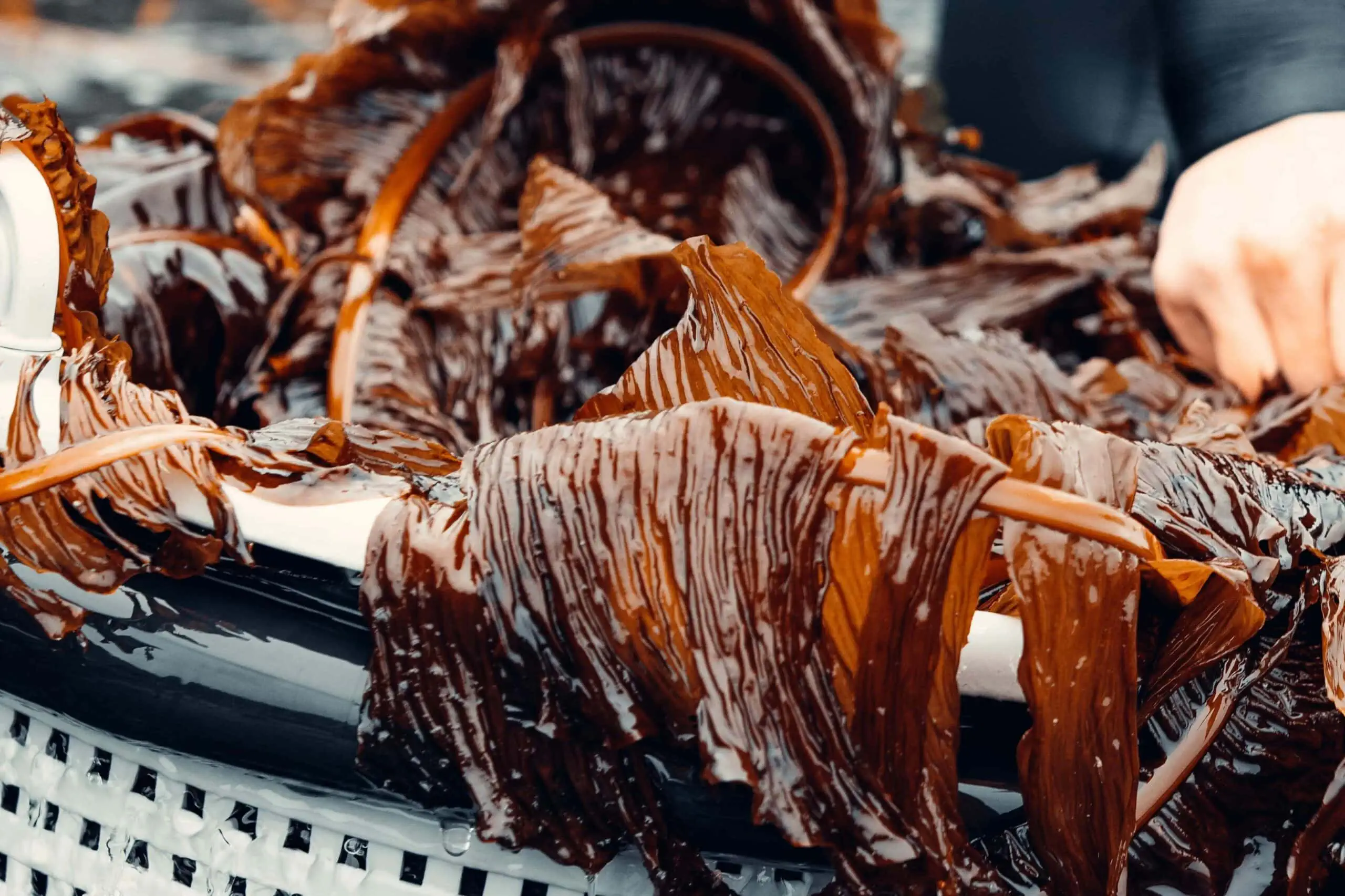
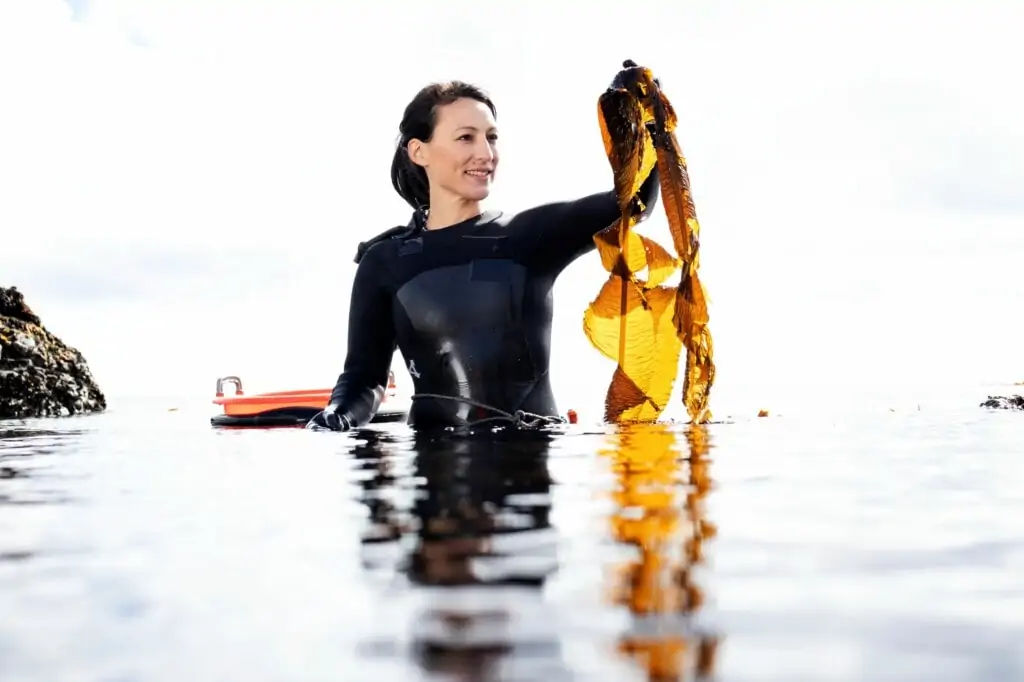
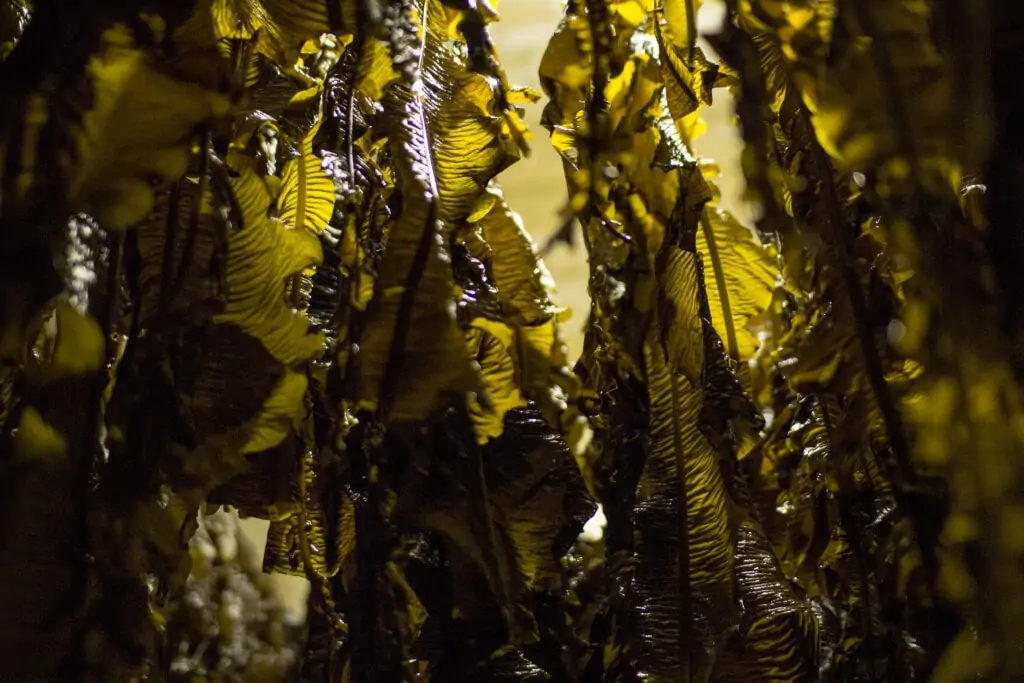
Like all seaweed, winged kelp is full of naturally-occurring monosodium glutamates which react with our tastebuds to create a savoury umami taste, which is highly prized in all sorts of cuisines. Winged kelp has a delicate taste, with notes from the whole spectrum of flavour, from fresh and green to rich and fatty. With no especially dominant flavours, winged kelp is very versatile, which is why it forms the base for many of our products!
When cooking with whole leaf the stalks need to be removed and cooked separately – they are naturally fibrous and need to be simmered for a couple of hours before the texture becomes palatable. The leaf on the other hand can be eaten raw in small quantities, or soaked in cold water for 30 minutes and added to salads, noodles and soups to enhance flavour, nutrition and texture. Winged kelp also contains phytochemicals that work as natural thickening agents – blending blanched winged kelp with blanched spinach makes a wonderfully creamy green purée!
Nutritional profile:
- Vitamin A (important for vision and growth)
- Vitamin B (boosts enzyme activity in the cells)
- Vitamin C (protects the cells from the effects of free radicals)
- Vitamin K (aids healthy blood cells and bone development)
- Chlorophyll (a natural antioxidant)
- Iodine (necessary for the production of thyroid hormones)
- Potassium (necessary for proper cell hydration)
- Magnesium (supports nerve and muscle function)
- Iron (a major component of haemoglobin, which carries oxygen around the body via red blood cells)
- Fucoxanthin (thought to help prevent breast and colon cancer, obesity and diabetes)

Due to its high concentration of minerals, antioxidants, and anti-inflammatory properties, winged kelp is often used in skincare products. It’s known to reduce redness, and help both skin and hair retain moisture, as well as adding protection from UVA rays and free radicals that can irritate the skin.
The exact nutritional content of seaweed depends on the season in which it was harvested, as well as its location. Seaweed is highly effective at absorbing trace minerals from its surroundings, which is why it’s important to source your edible seaweed from places where you know the water quality to be high. You can read more about where we harvest our seaweed here.
Recipes featuring winged kelp:
Winged kelp flakes can be found in most of our products – Arctic Ocean Greens, Arctic Seaweed Salt and Smoked Seaweed Salt all use this seaweed as their base. So if you head over to our recipes page, you’ll see that winged kelp features in the vast majority of them! Below are three recipes that use winged kelp in its whole leaf form, just like any other vegetable. You can see that it looks just like regular leafy greens – even kale – and this is a great mindset to have when you’re starting to cook with seaweed.
In our noodle salad recipe the kelp is simply blanched and eaten as it is, in our rice porridge recipe it’s simmered slowly with mushrooms, and in our omelet recipe we’ve fried it with eggs to create tasty rolls using a traditional Japanese technique. This is the ocean’s versatile vegetable, and we hope you have fun cooking with it!
